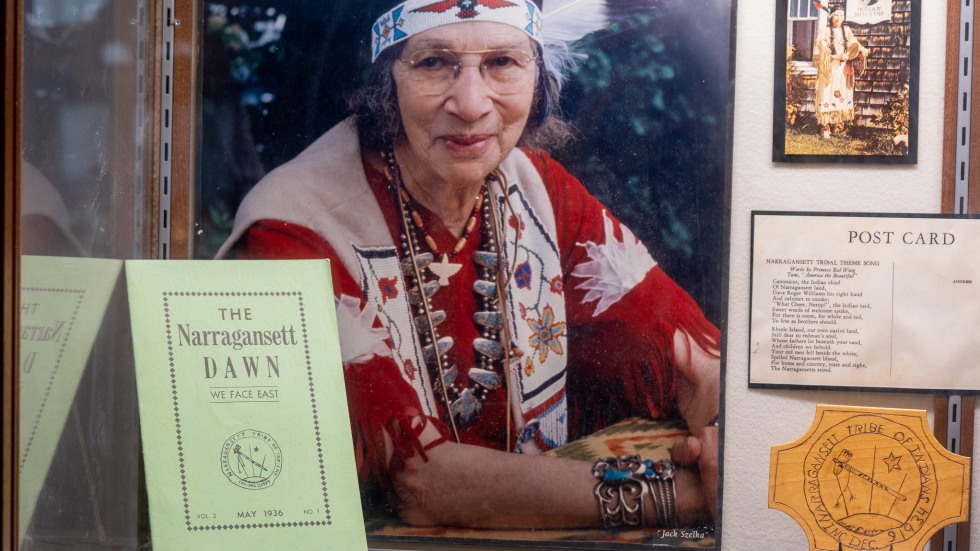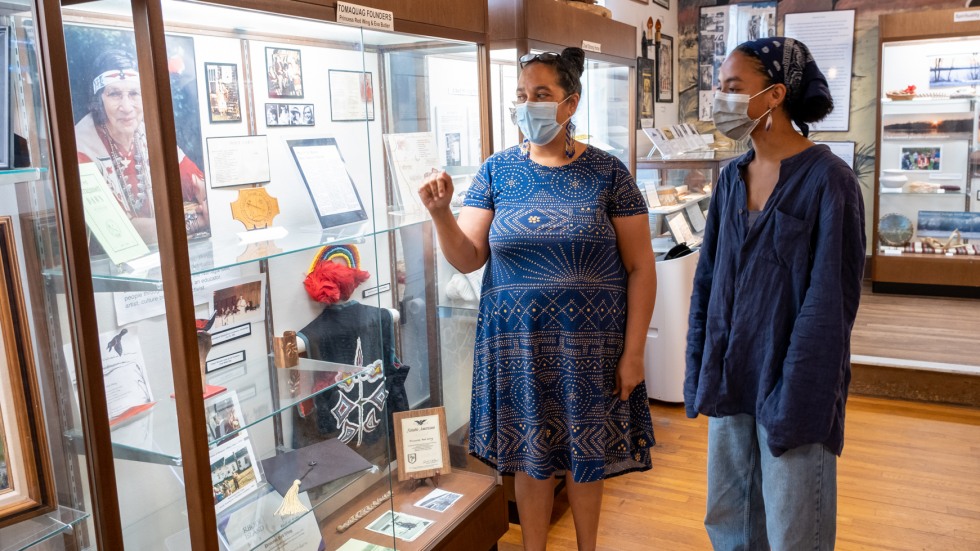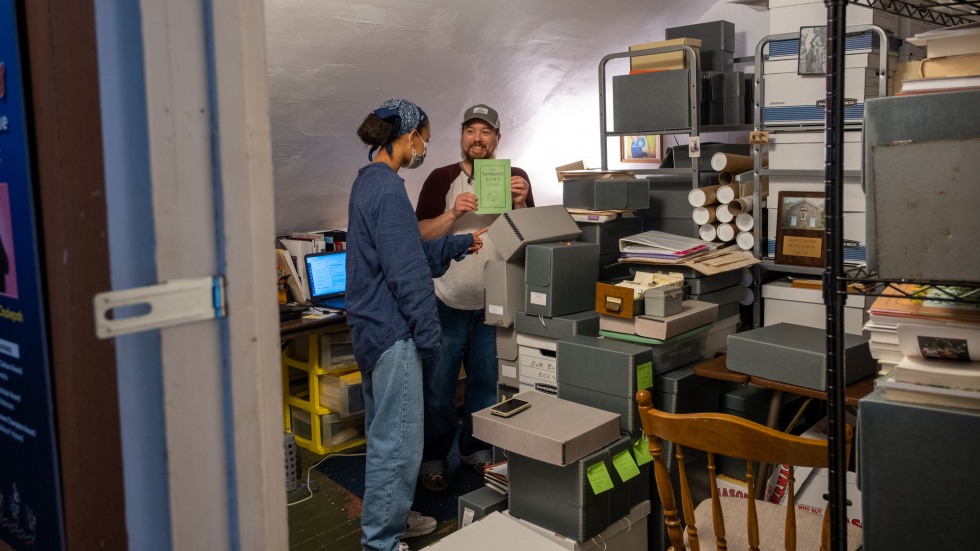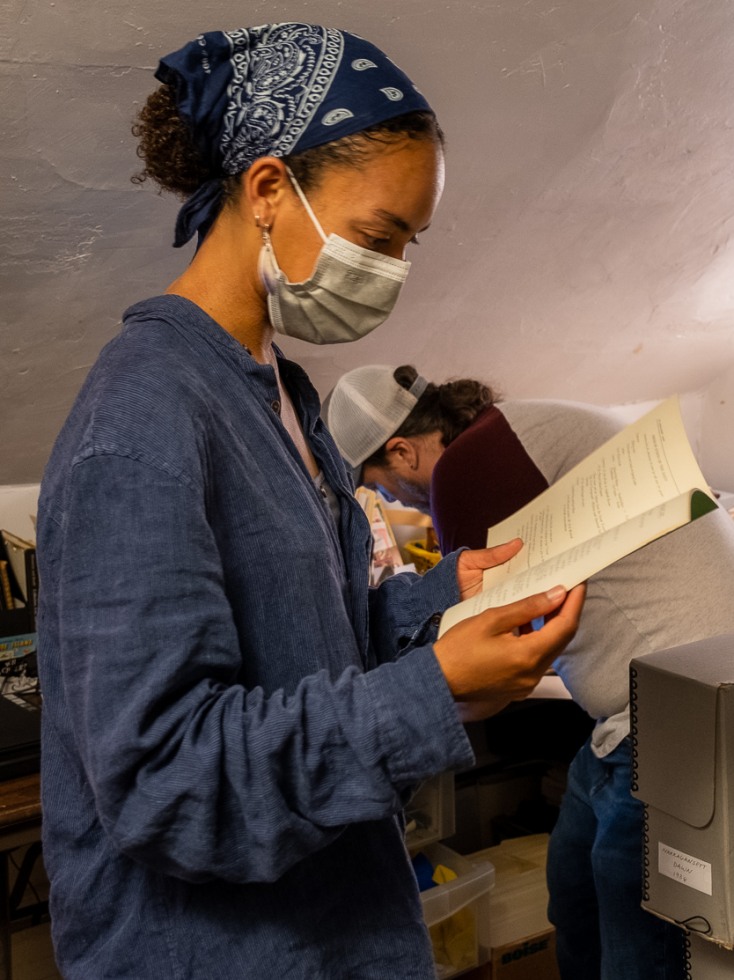PROVIDENCE, R.I. [Brown University] — For nearly a century, issues of the Narragansett Dawn — a monthly magazine containing valuable historical information and unique insights into 20th-century Native American life — have been hiding in plain sight.
Most issues of the Dawn, published by two members of the Narragansett Tribe in 1935 and 1936, are available on the University of Rhode Island’s digital commons website — but they are without critical metadata that help scholars find information with search terms and keywords. Others sit in boxes, waiting to be digitized, in the archive of the Tomaquag Museum, an Indigenous history, culture and arts museum in Exeter, Rhode Island.
This summer, Halle Bryant, a Class of 2021 Brown graduate, is working with Tomaquag Museum staff to bring the Dawn’s important contents out of the shadows.
“It seems like the Dawn originated as a way for members of the Narragansett tribal community to connect and stay up to date,” Bryant said. “But you can see that over the course of two years, it quickly grew to include regular columns and insight from Native Americans across New England and the country. It speaks not only to the history, traditions, food practices and news of the Narragansett Tribe but also to the larger story of Native American dispossession and Native Americans’ relationship with the natural environment, which is really valuable.”
Bryant, who earned a dual degree in applied math and Africana studies in May, is spending her first post-graduation summer reading and indexing every issue of the periodical, which each month collected news, stories and poetry by, for and about Native Americans in Rhode Island and beyond. (An early edition read: “The Narragansett Dawn is the speaking leaves of the tribe... Here you will find our work, our pleasures, our social activities, our life, history, traditions, signs and tongue.”)
By the end of the summer, Bryant will have read every word of every issue of the Dawn, and she’ll have created a comprehensive catalog of names, dates and places mentioned in the text, as well as related themes and keywords. Ultimately, her work will make it easier for students, faculty and the general public to find and cite information contained in the publication, deepening scholarly and public understanding of Native American history and everyday life.
“There’s so much knowledge contained in these archives, and there’s so much research that could be done with it, that it’s almost overwhelming to think about,” Bryant said. “At the end of the summer, I will be one of only a few living people who have read every issue. But hopefully that will change as more people become aware of this resource and gain access to it.”




